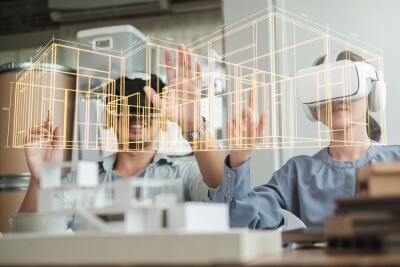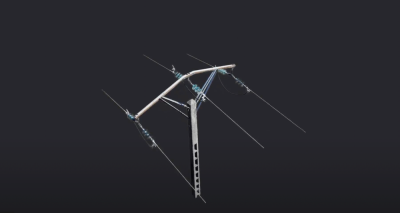One of the most important developments in recent years is around 3D visualizations. In mainstream discussions some of this progress can be a bit overstated – very few people, for example, are ready to be fully immersed in 3D digital spaces for extended periods of time – but particularly for enterprise use cases these new capabilities represent significant steps forward. As we talk about here frequently, it’s much more valuable for humans to visualize things in three dimensions than two, but we were too technologically limited to do so for most of our history.
That’s changed rapidly in recent years, with different forms of 3D visualization entering industrial spaces to significantly improve design workflows and provide more crucial context, even for things like real-time visualizations. Today, we’re going to look at five recent examples of this phenomena we’ve covered at Geo Week News. These stories cover a number of different aspects of the 3D visualization space, ranging from standards for the ecosystem to virtual reality updates, from modeling software to the industrial metaverse.
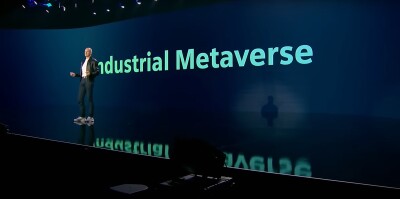
The industrial metaverse takes center stage at CES
Any mainstream reaction to something involving the term “metaverse” is likely to be met with skepticism, but in industrial settings the idea is gaining significant momentum with backing from major players like Siemens and NVIDIA, among others. The idea involves more than just 3D visualizations, but these are a key aspect of gaining maximum value from these platforms. This article delves into some of this momentum, particularly focusing on some announcements and keynotes made at CES back in January.
Unboxing Ergonomics in the Apple Vision Pro and other VR Headsets
This year’s release of the Apple Vision Pro has brought renewed mass interest in mixed reality, and the construction industry is one that many have long seen as potential stewarts of virtual reality. However, while collaboration and design work being done in virtual environments sounds great in theory, some logistical challenges still exist before people eagerly put on headsets for extended periods of time. In this article, guest author Lucas Marshall looks at how ergonomics have evolved in recent headsets, including the Vision Pro.
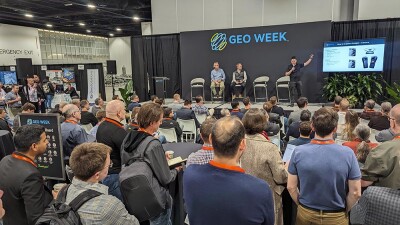
Experiencing the Innovation: NeRFs and Gaussian Splats Showcased at Geo Week 2024
3D visualization was predictably a major focus area at Geo Week this year, and one of the most popular sessions highlighted the newest innovations in this space: NeRFs and Gaussian Splats. These tools are still very much in their nascent stages, and in many ways are more theory than practical right now, but the immense potential for creating visualizations with this quickly developing technology was readily apparent, as relayed by Geo Week’s Erin Sewall.
DJI releases new 3D model editing software, DJI Modify
Every industry has been disrupted in some way, shape, or form by artificial intelligence in recent years, and 3D modeling is certainly no exception. While the ability to create these models has become exponentially simpler as both hardware and software has improved, everyone who has utilized photogrammetric workflows knows that models still often come back with various holes and errors that can be tedious and time-consuming to fix. This article looks at a new offering from DJI that solves this problem quickly and with one click of a button on the user’s part by leveraging advances in AI.
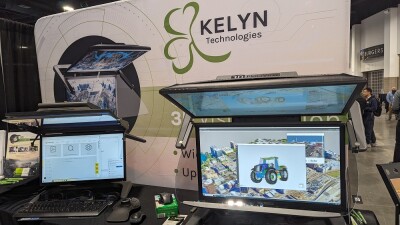
Utilizing 3D monitors for visualizations of complex data
When most people picture being able to truly visualize designs and other data in three dimensions, they generally picture some sort of VR headset in order to do so. As we covered above, though, that can at times be uncomfortable. It’s a problem that is solved by Schneider Digital’s 3D monitors, which provide a similar level of visualization combined with the comfort of sitting at a desk like any other desktop process. This article recaps a recent webinar hosted by Geo Week News that runs through some of the benefits reaped by using these monitors.
Why Trimble has joined the Alliance for OpenUSD
The ultimate vision for most 3D enthusiasts is an interconnected ecosystem tying these visualizations together, with the industrial metaverse being an example of this. In the shorter term, projects with multiple stakeholders using different softwares still need ways to make their 3D datasets interoperable. That’s what openUSD hopes to accomplish, and the Alliance for OpenUSD exists to promote the framework. Recently, Trimble was announced as a general member in the alliance, and this article includes comments from the company about why they joined and what they are hoping to both add to the effort and get out of it.




